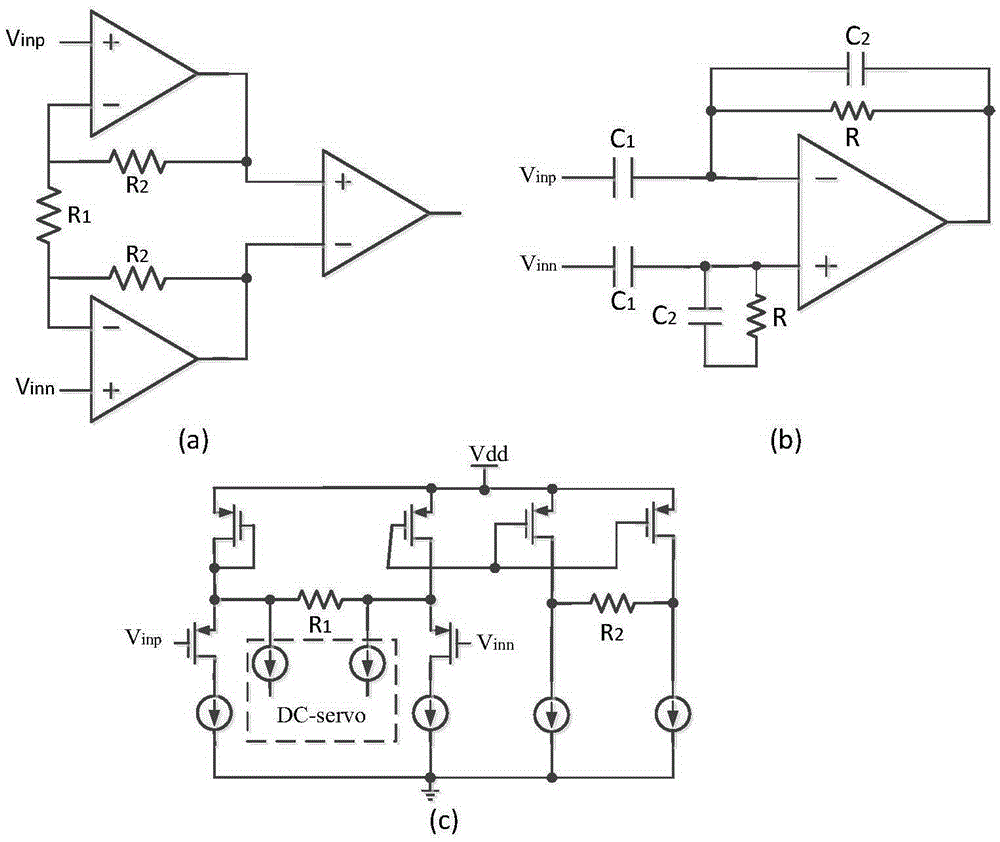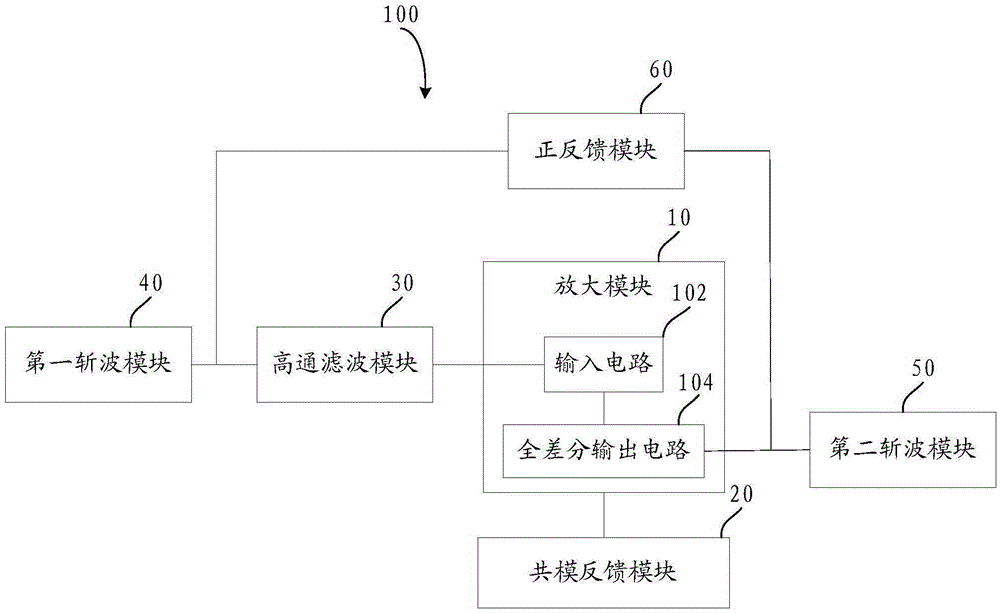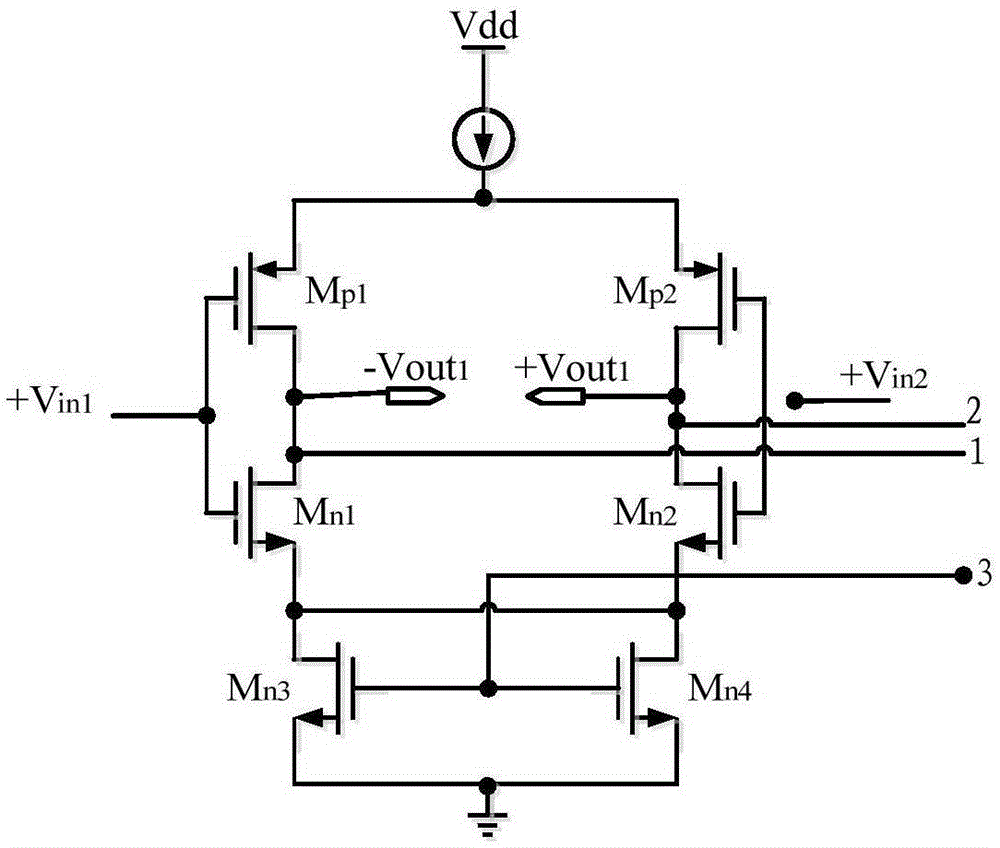Pre-amplifier and signal acquisition device
A preamplifier and weak signal technology, applied in differential amplifiers, DC-coupled DC amplifiers, positive feedback circuit devices, etc., can solve the problem of common-mode rejection ratio drop, low power consumption and large resistance value, affecting common-mode rejection ratio, etc. question
- Summary
- Abstract
- Description
- Claims
- Application Information
AI Technical Summary
Problems solved by technology
Method used
Image
Examples
Embodiment Construction
[0047] In order to make the object, technical solution and advantages of the present invention clearer, the present invention will be further described in detail below in conjunction with the accompanying drawings and embodiments. It should be understood that the specific embodiments described here are only used to explain the present invention, not to limit the present invention.
[0048] Such as figure 2 As shown, in some embodiments of the present invention, a preamplifier 100 is provided, and the preamplifier 100 is set in a signal acquisition device for amplifying the collected weak signal. Weak signals mainly refer to signals with low message intensity such as acoustic signals, optical signals or electrical signals, which are small and weak, and are not easily received, felt or received by equipment. Weak signals refer to extremely weak useful signals buried deep in the background noise. With the continuous development of science and technology, the detection of vario...
PUM
 Login to View More
Login to View More Abstract
Description
Claims
Application Information
 Login to View More
Login to View More - R&D
- Intellectual Property
- Life Sciences
- Materials
- Tech Scout
- Unparalleled Data Quality
- Higher Quality Content
- 60% Fewer Hallucinations
Browse by: Latest US Patents, China's latest patents, Technical Efficacy Thesaurus, Application Domain, Technology Topic, Popular Technical Reports.
© 2025 PatSnap. All rights reserved.Legal|Privacy policy|Modern Slavery Act Transparency Statement|Sitemap|About US| Contact US: help@patsnap.com



